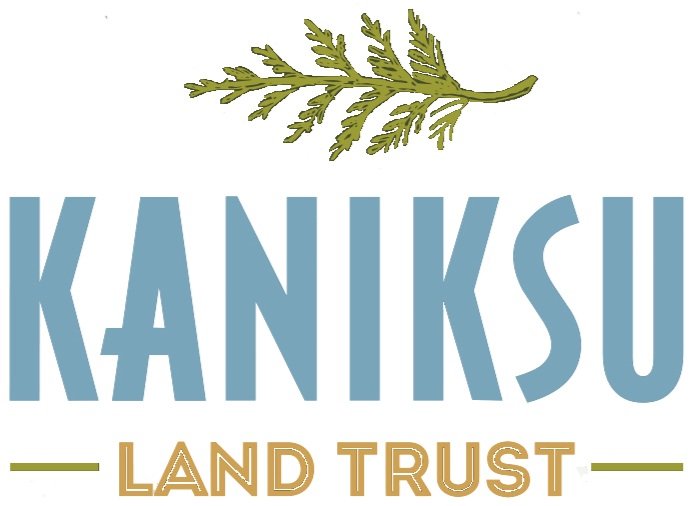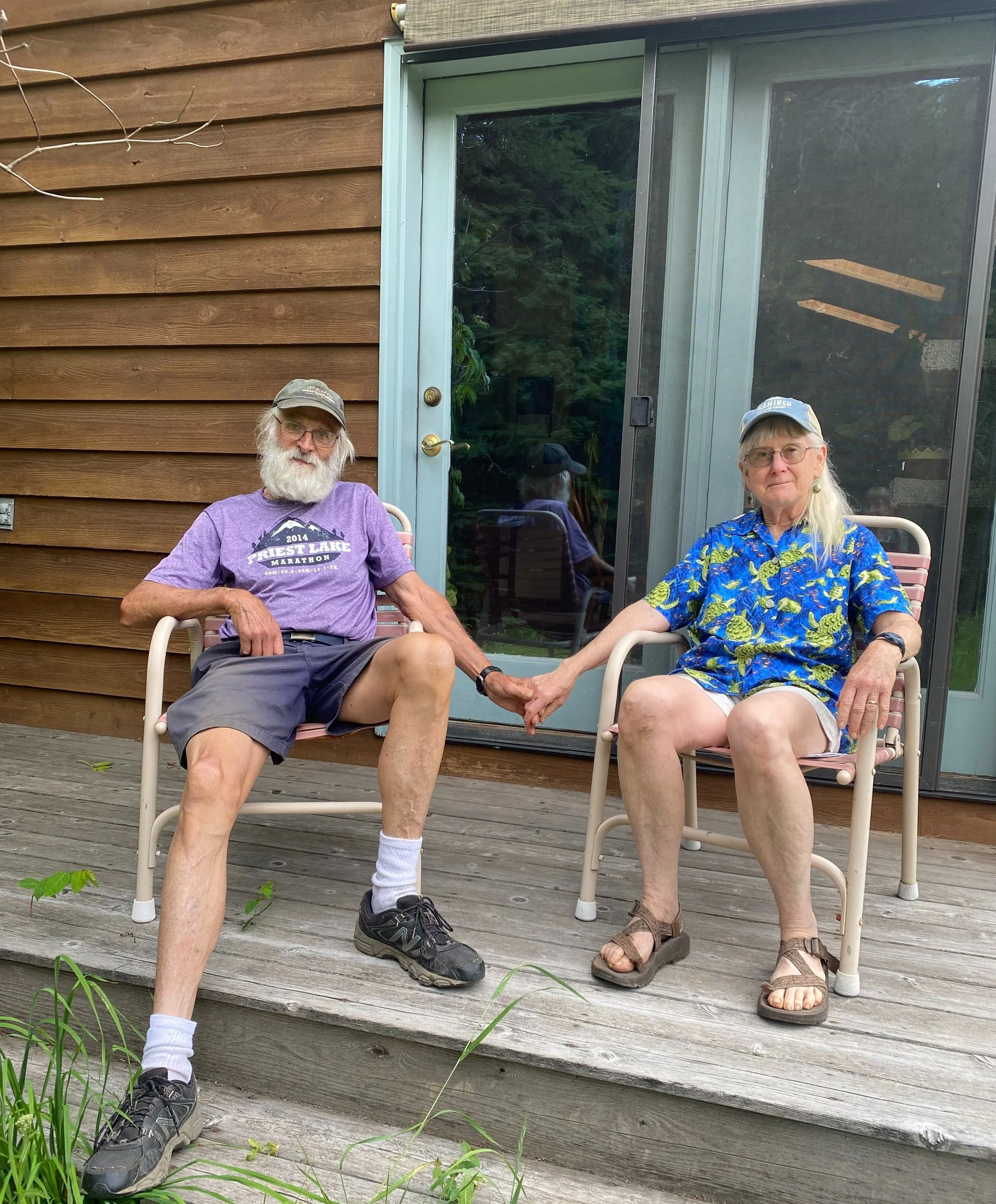GROUSE CREEK CONSERVATION AGREEMENT KEEPS FAMILY LAND INTACT
By Marcy Timblin, Communications Director
Driving through thick timbers along the lush green forest floor to meet with the owners of a newly signed conservation agreement, I found myself getting caught up in imaginary scenes of velvet antlered deer and foxes bounding through the woods. In this setting, one might expect to find John Harbuck and Susan Bates-Harbuck rocking on their porch enjoying the scenery. Instead, I came upon John clambering up the bank along his driveway a quarter-mile from the house pulling noxious weeds, Susan doing her part on the opposite side of the road.
In response to my advising John that once he starts pulling tansy, he will never be able to stop, he continued without looking up and said, “Go on up to the house. We will be there behind you.”
Approaching the three-story wood-sided house they had built and where they raised their daughter, I admired the flourishing garden, mature orchard, and carefully tended wild elderberry, cascara, and serviceberry shrubs that gave me a glimpse into their attentive stewardship.
The Harbucks have entered into a conservation agreement with Kaniksu Land Trust (KLT) to protect a 35-acre parcel near Grouse Creek, north of Sandpoint. This property easement aims to safeguard its open space and natural habitat for generations to come.
“Most of the properties around here used to be old ranches,” John began. “Then, the kids inherit it and split it off into tens. Now, there aren’t a lot of parcels that are more than 10 acres.”
Susan continued, "We wanted to protect it. I like this the way it is. We live here, and the animals live here too."
Having purchased the land in 1985, the Harbucks have become intimately connected to this place. As we walked the winding trails they had carved through the forest, they tested my knowledge of native flora and pointed out features I would have easily missed; the chink in the tree and old stumps from when it was last logged by Humbird in the early 1900’s and the swimming hole that has shrunk by 2 feet since 1985. Their admiration of this land is also seen in the names they have affectionately attributed to special areas; Wood Road, Cedar Corner, and Creek Loop.
“It was truly a privilege to assist John and Susan in conserving their special corner of Bonner County for future generations. Given the extensive water-storing wetlands, frontage on both banks of Grouse Creek, and carefully tended forestland, this parcel is a natural gem”, shared KLT’s Regan Plumb.
The conserved parcel showcases a blend of mixed coniferous and deciduous forests, wetlands, and a riparian corridor along Grouse Creek. “It’s varied. All of the trees in North Idaho are here,” John acknowledged. “We are missing a couple of trees that are found in North Idaho: Alpine Larch and Subalpine Fir, but we have the rest of them,” Susan clarified.
They have also seen a variety of wildlife including bear, porcupine, deer, and yes, fox, although coyotes are much more common. Notably, Grouse Creek serves as critical habitat for cutthroat trout and bull trout, both species of conservation concern. Additionally, the stream corridor is designated as a harlequin duck stream and white-tail deer wintering area.
Kaniksu Land Trust has conserved more than 4,100 acres of working land, wildlife habitat, and clean waters, as well as climate resilient, culturally significant, and community access lands. Such agreements between landowners and the land trust secure the integrity of special places in North Idaho and Western Montana where KLT works, preventing fragmentation and commercial development regardless of future ownership or inheritance.
John reiterated, "We've always wanted to put it in conservation," emphasizing their enduring dedication to preserving this special property.
Each conservation project is unique. The Harbuck property fits with KLT’s conservation priorities because of its rich wildlife habitat, open space, and pristine waterway. While this easement is not the same as a land donation and does not include public access, its open space conservation value benefits the entire community by providing scenic views, clean water, and homes for wildlife.
“Everyone needs a place to live, but conservation agreements like this one allow us to strike a balance by setting aside our most special places as our region continues to grow,” shared Plumb.
With this conservation agreement, the Harbucks set an inspiring example of responsible land stewardship, ensuring that this land will remain as it is forever.





